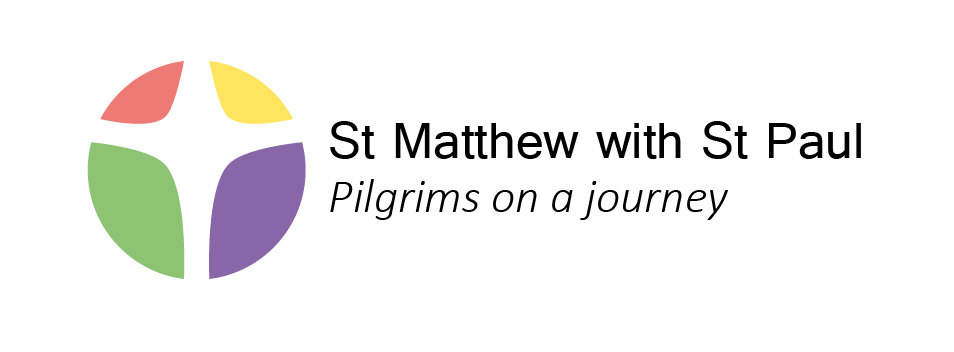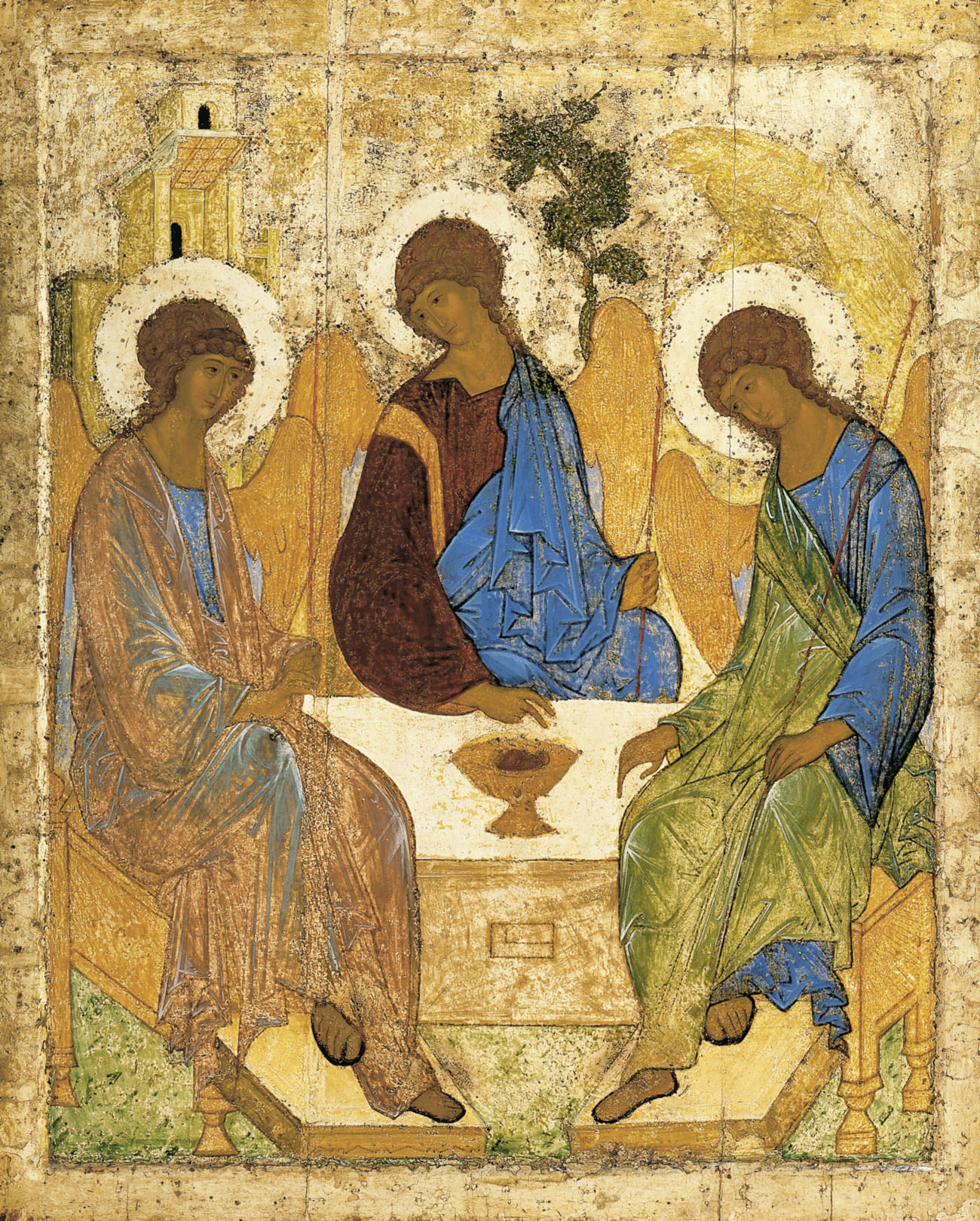The Holy Trinity: perfectly gathered, harmonious and at peace
Mary Copping, 16 June 2019
Proverbs 8: 1–4, 22–31; John 16: 12–15
Because of the Trinity’s mysterious nature and the difficulties people have in trying to understand it, it’s advised that one either gets a bishop in to do the sermon on Trinity Sunday, or a visiting preacher. You have neither – just me!
So, this is the first Sunday after Pentecost: Trinity Sunday. We’ve celebrated Easter for seven weeks, looking at the various resurrection appearances of Jesus and his Ascension. Then on Pentecost Sunday we celebrated the birth of the Church: the day when the Holy Spirit descended upon the disciples, which caused them to speak in languages they didn’t know, and when 3,000 people were baptised. The coming of the Holy Spirit at Pentecost transformed the disciples from fearful men – running away from the sight of Jesus on the cross, and hiding in the upper room afterwards – to powerful preachers and healers, spreading the good news of Jesus, as we see in the book of Acts.
For seven weeks, the colours in the church have been white; then last Sunday the colour was red, and today we’re back to white for this special Sunday. So, how do we come to understand what the Trinity means to us today? It’s not a feast day like Christmas, Easter or Pentecost, and not a holy season like Advent or Lent. It is actually a doctrine of our Church – something that we believe, something that is part of our faith.
We know that Jesus never mentioned the word Trinity, and it was first formulated when early Christians were trying to understand the relationship between Jesus and God in their documents and traditions. The Athanasian Creed, which speaks about the nature of God, is the first creed in which the equality of the three persons of the Trinity is explicitly stated.
The Trinity is a mystery, something that we struggle to believe, and we come to understand just a tiny bit of it, each in our own way. As our faith is given to us through the Holy Spirit, so understanding of the Trinity is given to us by the Holy Spirit, who guides us into all truth.
The Trinity is a way of saying something about us and the way we experience God. The Trinity is also a way of saying something about God and the way he is.
There have been many attempts to try and describe the Trinity, to try and make things easier to understand. Two ways, often used for children, are firstly the idea of water – ice, liquid and steam – all being the same substance but having different qualities, as with the Trinity – all God but each person having different qualities. Another is the idea of an egg – the shell, the albumen (the white) and the yolk. The three parts or components together are not called ‘eggs’ but rather ‘egg’, constituting one single egg, not three. Again, God the Father, God the Son and God the Holy Spirit, three components but one God. One tries not to use these analogies too often as they make something mysterious seem mundane!
What explains this best for me is the icon of the Trinity painted by Andrei Rublev around 1410 (we have a large print at the back of church). It is composed of three people sitting round a table, and the three faces are identical – three parts of God.
As you may know, colour is symbolic in iconography. All the figures wear a blue garment, which is the colour of the heavens, but each wears something that speaks of their own identity. The blue robe on each speaks of their divinity. Then the robe of God the Father, the creator of the world, shimmers, showing that he is a heavenly being. The Christ figure wears a brown garment, speaking of the earth, of his humanity. And he has a gold sash, which speaks of kingship. The figure of the Holy Spirit wears a green robe, representing new life – the Holy Spirit who helps us in this world, leads and guides. The group of three all look to each other, pointing to each other, all in perfect harmony.
In our gospel reading we have a wonderful picture of the Trinity in action. Jesus, the Son, is preparing his disciples for his going, telling them that God the Holy Spirit will be coming to lead them into all truth; and Jesus speaks about his Father, saying, ‘All that the Father has is mine’. In his farewell message and prayer, in chapters 16 and 17 of John’s gospel, Jesus weaves the connection between God the Father, himself and the Spirit.
The Holy Trinity is about relationship and indwelling. It is about three working together and the self-communication of God. The Trinity is about the mutuality of God, about our being drawn into the presence of God the Father by Jesus in the power of the Holy Spirit. And it is about our unity with each other, loving, helping and supporting each other and speaking to one another the glory of God the Father, Son and Holy Spirit. The Trinity is our way of life made possible by God.
The Holy Trinity is about relationship and indwelling … self-communication … mutuality.
There are some who say that the notion of the Trinity leads to polytheism, the worship of more than one God. But the root of the word ‘trinity’ is ‘unity’, the unity of the triune God, three in one and one in three.
For us, from Rublev’s icon, God the Father is the creator of the world, however one understands that. And as we look at the beauty of the natural world and as we act on how we can preserve this, we can thank him for the beauty of all that he has created and continues to create.
God the Son, Jesus Christ, the historical Jesus, who showed us God’s love on earth, showed us how to live our lives in relation to God and died so that we can have that relationship with the Father.
God the Holy Spirit can be seen as the personality of God, the presence of God working in our world today, leading and guiding us, strengthening us, working in those who don’t yet know him.
May we all continue to discover the love of God, the grace of God and the joy of God through the mystery of the Trinity. And as we do, may our faith journeys help us to understand and experience how and where God intersects daily with our lives and our world.
And finally, a quote from Canon Andrew Davison, Starbridge Lecturer in Theology and Natural Sciences at the University of Cambridge: ‘God is simple. God is not an amalgam of parts, as we are: everything about God is perfectly gathered, harmonious and at peace’.

